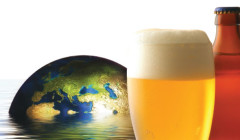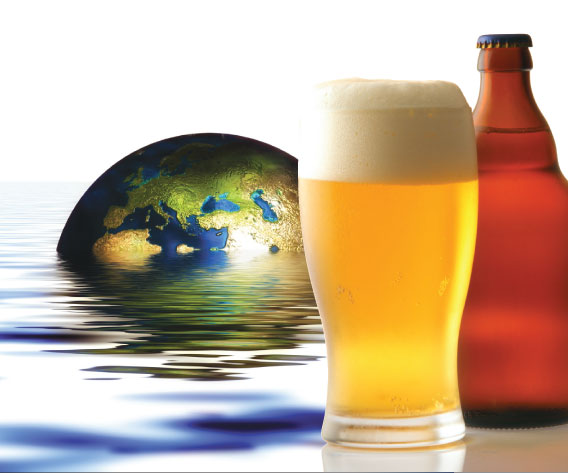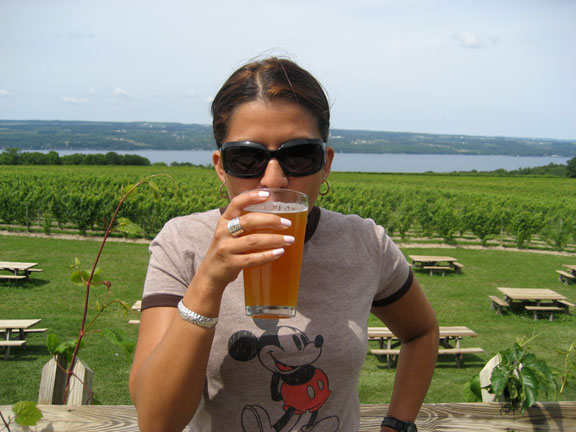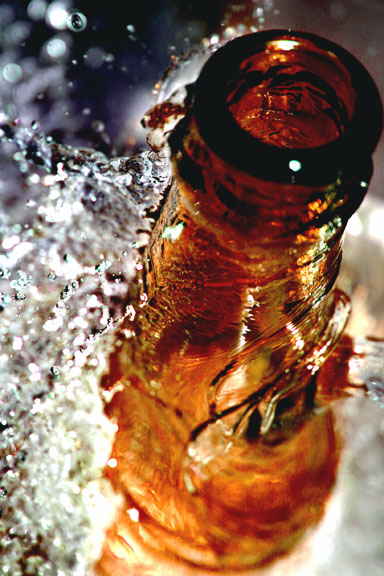Save Water, Drink Beer!

We drink it every day and cook with it. Beer? Well, for some of us, yes. We also bathe with it and have about 60% of it in our bodies. I should hope that the answer isn’t beer!  An everyday liquid we use for many purposes is water. In many cases we don’t think much about it except when it runs out, is contaminated, or there’s a story on the news about water conservation, droughts or flooding. Vital to our lives, water covers about 71 percent of Earth’s surface. Without it, we couldn’t survive. Without it, beer wouldn’t exist. Roughly 90 percent of beer is water; it’s beer’s most important ingredient. Hops, malted barley and yeast are also necessary components that make beer what it is. Yet beer’s main ingredient is water. Inaddition, water is used throughout the beer making process.
An everyday liquid we use for many purposes is water. In many cases we don’t think much about it except when it runs out, is contaminated, or there’s a story on the news about water conservation, droughts or flooding. Vital to our lives, water covers about 71 percent of Earth’s surface. Without it, we couldn’t survive. Without it, beer wouldn’t exist. Roughly 90 percent of beer is water; it’s beer’s most important ingredient. Hops, malted barley and yeast are also necessary components that make beer what it is. Yet beer’s main ingredient is water. Inaddition, water is used throughout the beer making process.
Beer’s water can come from a variety of (local) sources – rivers, lakes, wells, springs, etc. Monastic breweries such as Chimay use well water drawn from the monastery itself and have been doing this for centuries. Not all water may be suitable for beer. In order for it to be potable, it may be filtered via charcoal or reverse osmosis. What is reverse osmosis? Basically it’s a water purification technology that removes molecules, ions, and species such as bacteria from drinking water. Oftentimes water might not (or barely) be mentioned on a brewery tour. If you ever go on one, ask where the water comes from. You might be surprised!
W hile a beer’s taste depends on the hops, malt and yeast used, so will the type of water. Hard and soft water will produce different flavors. For example, the deliciously famous Guinness stout is in large part due to Dublin’s naturally hard water. Mineral free/soft water greatly impacts the pilsners we enjoy from Plzen in the Czech Republic. These are just a couple of examples of some widely known beers that wouldn’t taste as we know them if it weren’t for the local water source.
hile a beer’s taste depends on the hops, malt and yeast used, so will the type of water. Hard and soft water will produce different flavors. For example, the deliciously famous Guinness stout is in large part due to Dublin’s naturally hard water. Mineral free/soft water greatly impacts the pilsners we enjoy from Plzen in the Czech Republic. These are just a couple of examples of some widely known beers that wouldn’t taste as we know them if it weren’t for the local water source.
In the Central New York and Finger Lakes region, microbreweries also use local water sources for beers. For example, Rooster Fish Brewing in Watkins Glen uses Seneca Lake water and Empire Brewing Company’s beers use Skaneateles Lake, one of the nation’s top cleanest water sources.
 We know how much water is in beer (90%), but do you know how much water is used to actually fill a 12 ounce bottle? According to the Los Angeles Times (4/9/2015), it takes two gallons to make one ounce of beer! While that may sound like a lot of water—compared to other products—ounce for ounce beer uses less water. Take for example, wine, orange juice, and pineapple juice. Each ounce takes 3.5, 4.1, and 6.4 gallons respectively. Lovers of beer don’t need a reason to drink it – but hey, I’ll give up orange juice for the sake of water conservation! So the next time you drink your deliciously flavored beer, remember how important water is in general. Order a glass of water with your beer during the summer heat (and all the time, really) and stay hydrated! Cheers!
We know how much water is in beer (90%), but do you know how much water is used to actually fill a 12 ounce bottle? According to the Los Angeles Times (4/9/2015), it takes two gallons to make one ounce of beer! While that may sound like a lot of water—compared to other products—ounce for ounce beer uses less water. Take for example, wine, orange juice, and pineapple juice. Each ounce takes 3.5, 4.1, and 6.4 gallons respectively. Lovers of beer don’t need a reason to drink it – but hey, I’ll give up orange juice for the sake of water conservation! So the next time you drink your deliciously flavored beer, remember how important water is in general. Order a glass of water with your beer during the summer heat (and all the time, really) and stay hydrated! Cheers!









